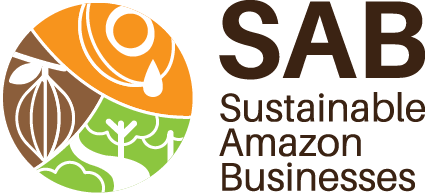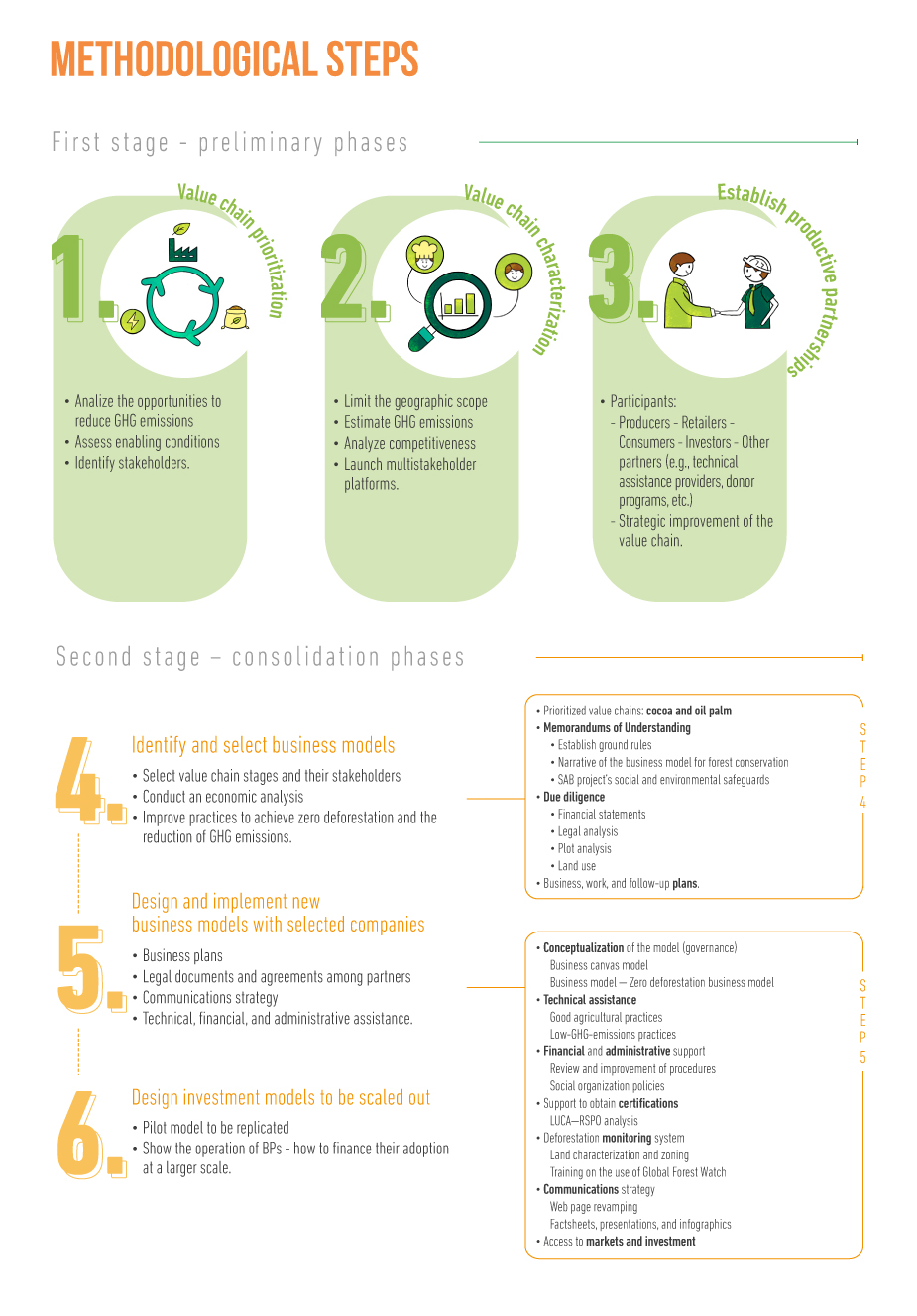Business Model / Investment Model
Business and investment models with zero deforestation and low greenhouse gas (GHG) emissions
Why should a zero-deforestation and low-GHG-emissions business model be developed?
Increased deforestation in the Peruvian Amazon with negative effects over climate
- The main driver of deforestation and forest degradation is the expansion of the agricultural frontier.
- Changes in land use are the main source of GHG emissions in Peru.
Agricultural business model in the Amazon in need of transformation
- Value chains of the main commodities show low productivity and yields.
- Household agriculture shows low levels of organization, formalization of properties, access to credit, and technology.
- Small plot sizes.
New international regulations on imported deforestation
- International markets are moving towards regulations and requirements of deforestation-free products (e.g., the European Union, the United Kingdom, and USA, among others)
International commitments on forests and climate
- It is necessary to articulate international commitments (e.g., the Paris Agreement, NDCs, JDI, and the Glasgow Declaration) with national/regional climate policies and actions by the private sector.
What does the business model entail?
- The development of a zero-deforestation business model seeks to grant an added value to agricultural production contributing to the conservation of forests and the reduction of GHG emissions. This requires the alignment of the stakeholders taking part in the business model, as well as alignment with other actors linked to the value chain.
The zero-deforestation business models must be economically profitable, socially inclusive, and ready for investment.
Download here the infographic to learn more about the business model.
How to get started?
Prepared by Climate Focus
It is important for companies to be prepared to conduct legal and financial due diligence processes, which are normally carried out by donors and investors. Once these have been successfully carried out, it is possible to start the implementation of zero-deforestation and low-GHG-emissions business models, which will also require additional enabling conditions, such as:
- Compliance with environmental and social safeguards.
- Participation in national and regional zero-deforestation commitments.
- Understanding the model and willingness of all producers involved to implement it.
What are the main components and activities?
In any agricultural value chain, a zero-deforestation business model must be able to prove to any buyer the products reaching the market are, in fact, deforestation-free. It is thus important to be able to access information on the place of origin and production features, using a system that allows traceability and a transparent and trustworthy monitoring of products. The main components are:
- Monitoring, reporting, and verification system (MRV)
-
-
- Setting environmental, social, and economic indicators
- Georeferenced plots
- Analysis of changes in forest cover
- Tools to monitor deforestation
- Measurement of GHG emissions
- Estimation of income and productivity
- Monitoring environmental and social safeguards
- Standardization of processes to achieve the social wellbeing of producers
-
- Governance
-
-
- Conceptualization of zero-deforestation and low-GHG-emissions production chains
- Raising awareness on the importance of the conservation of the Amazon Forest
- Understanding the business model ecosystem and its main stakeholders
- Strengthening the administrative and managerial processes that ensure the business is being managed and that it does not face any risks due to a poorly defined governance structure
-
- Sustainable production
-
-
- Identification of Good Agricultural Practices low in GHG emissions for a specific value chain
- Trainings to increase productivity
- Sustainable soil management and analysis
- Pest and disease control
- Setting agroforestry arrangements, when possible
-
- Differentiated markets
-
- Market and value chain surveys
- Identification and access to markets that recognize the added value of zero-deforestation products
- Support to buyers and final consumers
Who are the main stakeholders?
The zero deforestation and low in GHG emissions business models articulate multiple stakeholders sharing the goal of mutual benefits and conservation of the Peruvian Amazon
What does the investment model entail?
The zero-deforestation and low-GHG-emissions investment model is the financial and governance structuring carried out to meet the specific need of developing a business model, where agricultural production does not cause deforestation and does contribute to the reduction of GHG emissions by implementing good agricultural and/or livestock practices.
Testimony of Nilo Maguiña, General Manager of OLAMSA, and Carlos Pérez, General Manager of the Central Committee for the Future Development of Curimaná
Download here the infographic to learn more about the investment model.
Do these models work?
Yes! We are currently implementing two pilot projects in the Ucayali region. Along with the Central Committee of Ucayali Oil Palm Producers (COCEPU) and Oleaginosas Amazónicas S.A. (OLAMSA) for the oil palm value chain, and with the Central Committee for the Future Development of Curimaná for the cocoa and chocolate value chain, we have accomplished the conservation of over 244 ha of forest, we are improving crop management and reducing GHG emissions, while improving the living conditions of more than 104 oil palm producers and 40 small cocoa producers.


